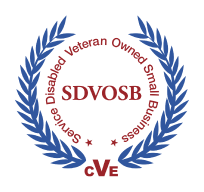Houston
Houston Digital Forensics
Address:
9750 Tanner Rd. Houston, Texas 77041Latest Blog in The eDiscovery Zone
Beyond Automation: Why Human Judgment Remains Critical in AI Systems , Part 2: Risk Management Without Humans
Series context. This is Part 2 of Beyond Automation, a multi-part examination of the risks that emerge when organizations remove human judgment from AI-enabled decision systems. Building on Part 1’s analysis of over-automation and silent failure modes, this installment examines how these failures manifest in enterprise risk management. [1]
The Illusion of Precision in AI-Driven Risk Programs
Risk management is among the most aggressively automated enterprise functions. AI-driven platforms now score third-party risk, prioritize fraud alerts, manage AML and KYC screening, and populate enterprise risk registers at machine speed. These systems promise consistency, efficiency, and objectivity in environments that have historically relied on human judgment.
The problem is not automation itself. The problem arises when AI-generated outputs are treated as decisions rather than inputs.
The Mindset Shift – Part 5: From Awareness to Action, Building a Safety Culture
Series context. This is Part 5 of the Mindset Shift series, moving from individual readiness toward organizational culture. After exploring personal preparedness, time and distance, Run–Hide–Fight, and threat anatomy, this installment explains why safety programs fail without cultural reinforcement across leadership, environment, and daily practice. [1]
Why Safety Culture Fails on Paper but Matters in Practice
Many organizations believe they have a strong safety program because they have policies, training modules, and an Emergency Operations Plan (EOP). Yet during real-world incidents, these same organizations often experience communication breakdowns, slow decision-making, and a lack of coordinated response.
The problem is not the absence of documentation. It is the absence of a safety culture that activates those documents. Culture determines whether people speak up, whether leaders reinforce readiness, and whether employees trust the systems designed to keep them safe.
Forensics and Futures: Navigating Digital Evidence, AI, and Risk in 2026 – Part 1
Series context. This is Part 1 of the Forensics and Futures 2026 series. It introduces a shift that investigators can no longer treat as an edge case: adversaries are not just hiding evidence, they are constructing it, poisoning it, and steering investigators toward a false narrative. [1]
The Rise of Adversarial Forensics
Digital forensics has historically relied on a simple premise: systems contain artifacts that reflect what actually happened. That premise is now under active pressure from adversarial behavior and AI-enabled manipulation.






